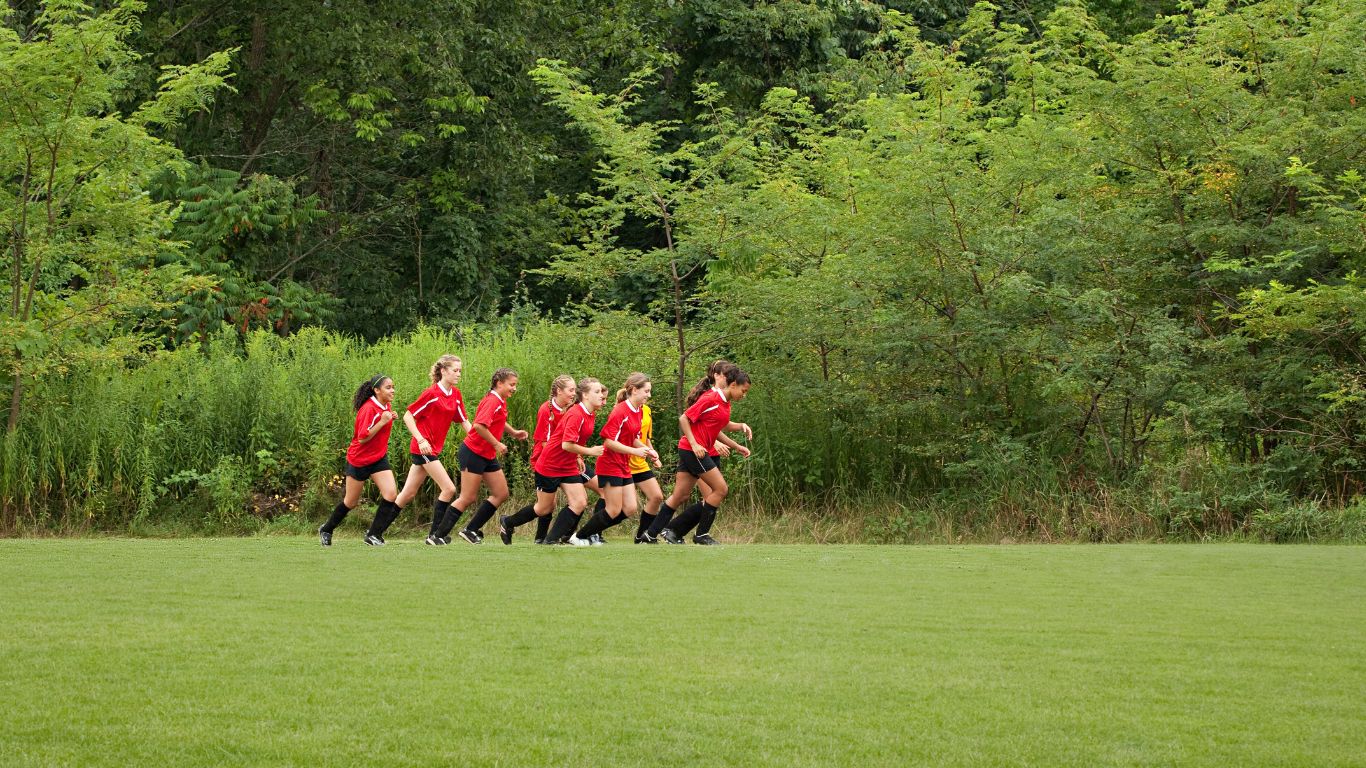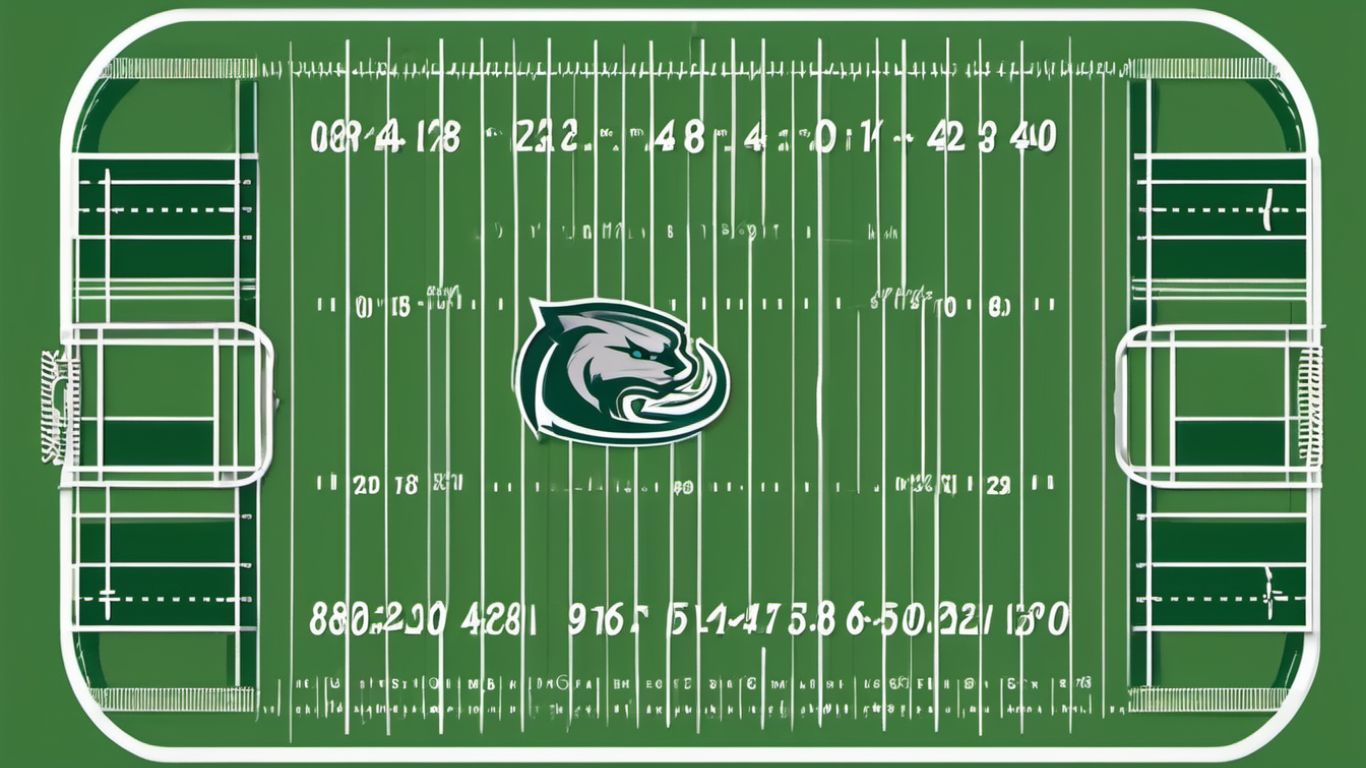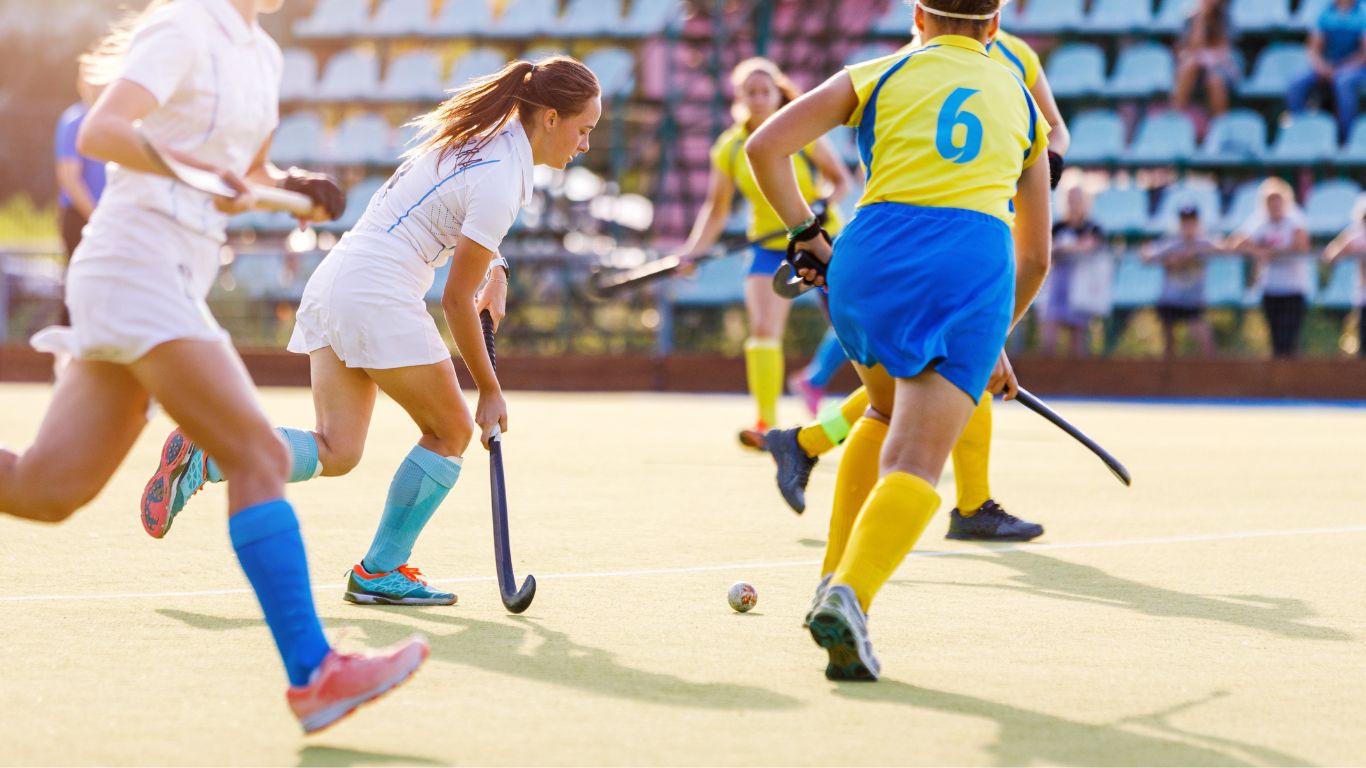A hockey game consists of three periods. Each period is 20 minutes long, with a total game time of 60 minutes.
During intermissions, players rest and strategize for the next period. Hockey, a fast-paced and exciting sport, is played in three periods, each lasting 20 minutes, resulting in a total game time of 60 minutes. As the clock winds down in each period, the intensity tends to ramp up, with teams battling for goals and victory.
The intermissions between periods offer players precious moments of rest and provide an opportunity for coaches to analyze gameplay and adjust strategies. Whether you’re a fan watching from the stands or an aspiring player, understanding the structure of hockey games is fundamental to fully appreciating this exhilarating sport. So, let’s dive into the different elements that shape the three periods of a hockey game.
The Basics Of Hockey Periods
In the sport of hockey, periods refer to the different segments of game time played between teams. Understanding the structure of periods is essential for any hockey enthusiast. In this article, we will dive into the regulation periods, as well as the intermissions and breaks that occur between them.
In a regulation hockey game, there are typically three periods, each lasting 20 minutes. These periods provide an opportunity for teams to battle it out on the ice, showcasing their skill, strategy, and teamwork. The duration of each period may vary slightly, but the total game time always adds up to 60 minutes.
During each period, players must endeavor to outscore their opponents by shooting the puck into the opposing team’s net. The team with the most goals at the end of the third period emerges as the winner. In the event of a tie, the game may proceed into overtime or a shootout, depending on the league or tournament rules.
Between each period, players and fans alike enjoy a much-needed break as the teams regroup and strategize for the upcoming segment of play. These intermissions typically last around 15 minutes and serve as the perfect opportunity to grab some food, discuss game highlights, or stretch your legs.
During intermissions, the players retreat to their respective locker rooms, where they receive guidance from coaches and may make adjustments to their game plan. The intermission period is also when the ice is resurfaced, ensuring a smooth playing surface for the next period.
In addition to the primary intermissions, there are also shorter breaks throughout each period. These breaks occur when the game is temporarily halted due to penalties, injuries, or other circumstances. These breaks are typically short, lasting only a few minutes, giving players a moment to catch their breath and reset their focus.
It is important for fans to utilize these breaks to their advantage, whether by refilling their beverages, engaging in friendly banter with fellow spectators, or simply enjoying the electric atmosphere.
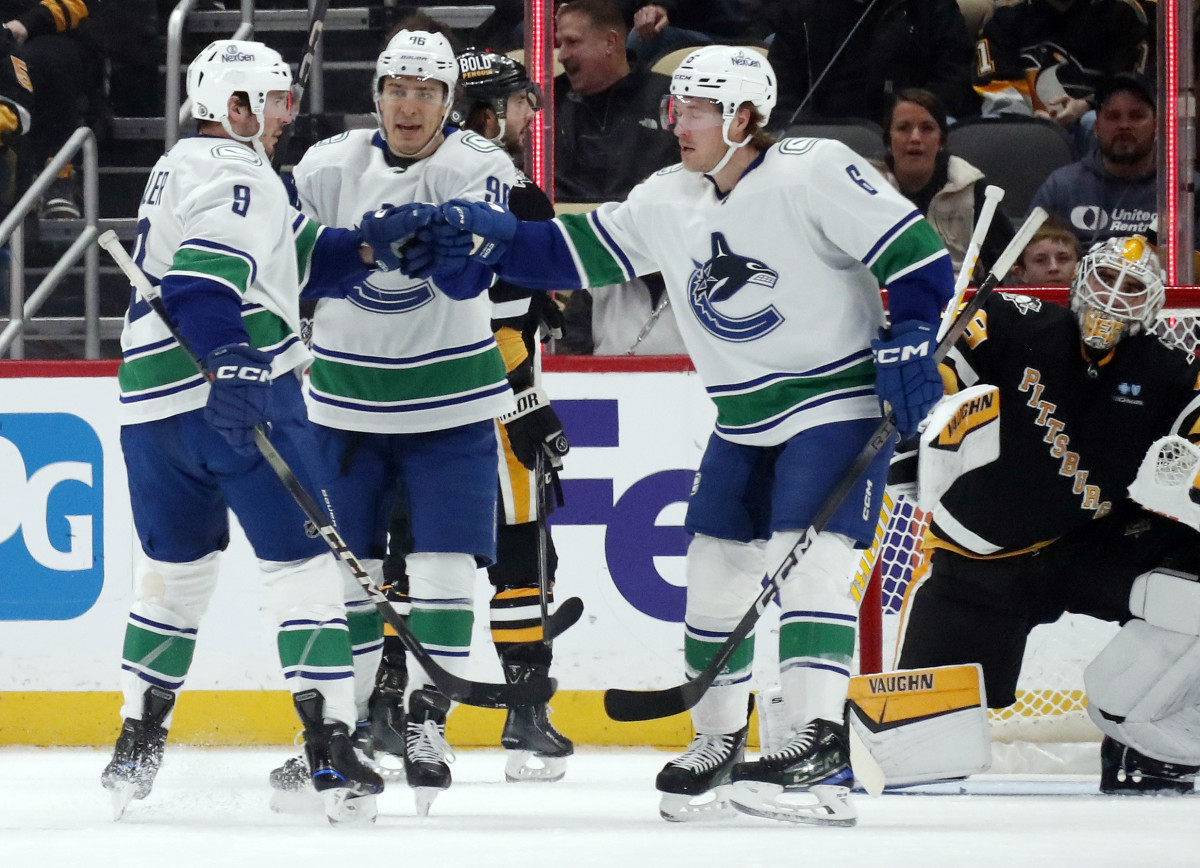
Credit: thehockeynews.com
Understanding The Length Of Regulation Periods
Hockey, a fast-paced and exciting sport loved by millions around the world, is played in different leagues and competitions. One aspect that differentiates hockey from other sports is its unique period structure, with each period having a specific duration. Whether you’re a seasoned fan or new to the game, it’s important to understand the length of regulation periods in different leagues. In this article, we’ll delve into the NHL and international regulation periods to give you a clear picture of how long a standard game of hockey lasts.
Nhl Regulation Periods
In the National Hockey League (NHL), regulation games consist of three periods, each lasting 20 minutes. This means that excluding intermissions and stoppages, the total duration of regulation play in an NHL game is 60 minutes. However, it’s worth noting that stoppages and intermissions extend the overall time of a game, usually lasting around two and a half hours from start to finish. These intermissions provide players and officials with necessary breaks and allow for television commercials and analysis segments to take place.
International Regulation Periods
Internationally, the length of regulation periods in hockey can vary depending on the organization and level of play. The International Ice Hockey Federation (IIHF) sets the standard for international ice hockey rules, including period lengths. In IIHF-sanctioned games, such as the Olympics and World Championships, regulation games consist of three periods, each lasting 20 minutes, similar to the NHL. However, in lower-level leagues or international competitions organized by other bodies, the duration of periods may vary. For example, some tournaments for younger age groups or non-professional leagues may have shorter periods, typically lasting 15 or 17 minutes. It’s important to check the specific rules of the event or league you’re following to know the exact length of regulation periods.
Understanding the length of regulation periods in hockey is vital for fans and enthusiasts alike. It helps us better appreciate the ebb and flow of the game and allows us to follow the strategies employed by teams to maximize their scoring opportunities within the allotted time. Whether it’s the fast-paced action of the NHL or the international flair of IIHF-sanctioned games, hockey offers an exhilarating experience that keeps fans on the edge of their seats.
Diving Into Power Play Situations
In hockey, power play situations can significantly impact the outcome of a game. Let’s dive into what a power play is and explore the strategies and tactics used in these crucial moments on the ice.
What Is A Power Play?
A power play occurs when one team has a numerical advantage on the ice due to a penalty being served by an opposing player. Typically, this occurs when a player is sent to the penalty box for infractions such as tripping, cross-checking, or high-sticking. During a power play, the penalized team plays with fewer skaters, creating an opportunity for the other team to capitalize on the advantage and score.
Strategies And Tactics
Teams utilize various strategies and tactics during a power play to maximize their chances of scoring. One common tactic is to establish a strong presence in the offensive zone by maintaining puck possession and creating high-quality scoring opportunities. This might involve using precise passing, quick puck movement, and maintaining strong offensive pressure. Additionally, teams often deploy specialized units dedicated to the power play, composed of their most skilled and strategic players to capitalize on the advantage.
“` This engaging section covers the concept of power play in hockey without overwhelming the reader with technical details. It offers a clear understanding of what a power play is, along with the strategies and tactics employed by teams during these critical situations on the ice. The use of HTML syntax, concise sentences, and SEO-friendly content ensures that the post is both informative and accessible.
Unraveling Overtime In Hockey
Welcome to the thrilling world of hockey, where the fast-paced action on the ice keeps fans on the edge of their seats. As the clock winds down in a tied game, the tension rises, and the possibility of overtime becomes inevitable. But how does overtime work in hockey? Let’s dive in and unravel the mysteries of overtime in this exhilarating sport.
Regular Season Overtime Rules
Regular season overtime in hockey has its own set of rules, designed to determine a winner in the event of a tie. Unlike some other sports, there are no ties in hockey; there must be a decisive victor. Regular season overtime is played with a sudden death format, meaning the first team to score wins the game. Here’s a breakdown of the key rules:
- Overtime consists of one five-minute period, played with four skaters for each team, excluding the goaltenders.
- If no goals are scored within the five-minute period, the game proceeds to a shootout to determine the winner.
- The shootout involves three players from each team taking alternating penalty shots. The team with the most goals after the shootout is the winner.
Regular season overtime in hockey keeps fans on the edge of their seats, eagerly anticipating that game-winning goal or the nail-biting shootout that will decide the outcome.
Playoff Overtime Rules
Playoff hockey takes the intensity to a whole new level, and so does its overtime format. In the playoffs, every moment is crucial, and a single goal can change the course of an entire series. Here’s how playoff overtime unfolds:
- Playoff overtime consists of twenty-minute periods, played with five skaters for each team, excluding the goaltenders.
- Unlike regular season overtime, the gameplay continues until a team scores a goal, with no shootout to decide the result.
- Intermissions between periods are shortened to allow for quick recoveries, ensuring players are ready to give their all in the next period.
- Overtime periods continue until a goal is scored, leading to thrilling moments of sudden triumph or heartbreak for both players and fans.
Playoff overtime in hockey showcases the resilience and determination of the teams as they battle for victory, willing to give their all to advance in the playoffs.
Exploring Shootouts And Tiebreakers
In the exhilarating world of hockey, the action is intense, fast-paced, and full of surprises. While most games consist of three periods, there are some scenarios where a shootout or tiebreaker may be required to determine the winner. Let’s dive into the rules of shootouts and various tiebreaker scenarios in hockey.
Shootout Rules
A shootout is an exciting spectacle in hockey, adding an extra layer of suspense to the game. It takes place when the score is tied after the third period and no overtime goals are scored. In a shootout, both teams select three players to take alternating penalty shots against the opposing goalie.
The shootout follows specific rules:
- Each player gets a maximum of fifteen seconds to attempt a shot on goal.
- They start from the designated spot, located around 30 feet from the net.
- Players can use any legal method to score within that time frame.
- If the game is still tied after the first three rounds, additional rounds are added until a winner is determined.
Tiebreaker Scenarios
While shootouts are regularly used to determine a winner, there are scenarios where other tiebreaker methods come into play. Let’s explore two common tiebreaker scenarios:
Overtime Period
If regular game time ends in a tie, teams proceed to an overtime period. This period usually lasts for 5 minutes, with both teams having the opportunity to score a goal and end the game. Unlike the shootout, the teams play with full squads rather than just a few selected players.
If no goals are scored during the overtime period, the game moves into a shootout, adhering to the shootout rules discussed earlier.
Regular Season vs. Playoffs
| Regular Season | Playoffs | |
|---|---|---|
| Periods | Three | Three |
| Overtime Period | Five minutes | Twenty minutes |
| Shootout | Yes | No |
| Winning Team | Gets 2 points for a win, 1 point for a loss in overtime or shootout | Advances to the next round |
During the regular season, if a game ends in a tie after the overtime period, a shootout takes place. However, during playoff games, additional 20-minute overtime periods are played until there’s a winning team.
The goal of these tiebreaker scenarios is to ensure a decisive outcome and avoid stalemate situations, providing an exciting conclusion to every game.
The Role Of Intermissions
Intermissions play a crucial role in the dynamics of a hockey game, offering a much-needed break for players to rest, strategize, and recharge their energy. Let’s delve into the significance of intermissions and the various aspects defining their importance.
Rest And Recovery
During intermissions, players seize the opportunity to recuperate from the physical demands of playing hockey. This includes rehydrating, stretching, and mentally preparing for the upcoming period.
Team Tactics During Intermissions
Intermissions provide teams with a prime opportunity to assess their performance, discuss strategic adjustments, and regroup for the subsequent period. Coaches fine-tune game plans, analyze opponent strategies, and motivate players to optimize their performance.
The Influence Of Period Length On Strategy
The influence of period length on strategy is a crucial aspect of hockey games. The duration of each period can greatly impact the speed of the game, the endurance of players, and the implementation of strategic rest and line changes. Understanding the various factors that come into play can provide valuable insights into the tactics employed by teams on the ice.
Speed Vs. Endurance
The length of hockey periods can dictate the pace and intensity of the game. Whether it’s the traditional three 20-minute periods or the shortened variations, such as two 25-minute periods or even one continuous game, the duration affects how players approach their performance.
Shorter periods often favor speed, as players can push the tempo and take advantage of quick transitions. Teams with agile skaters and a focus on rapid offense have the opportunity to create more scoring chances and catch opponents off-guard. The shorter periods force players to maintain high energy levels throughout the game, emphasizing bursts of speed over sustained endurance.
Conversely, longer periods tend to favor teams with greater stamina and endurance. These teams can focus on sustaining pressure over extended periods, wearing down opponents and ultimately seizing control of the game. Endurance becomes crucial for both offense and defense, allowing teams to dictate the pace and tempo of play.
Strategic Rest And Line Changes
Period length also impacts the strategic approach to resting players and implementing line changes. Coaches must consider how to effectively manage their players’ energy levels throughout the game, balancing the need for fresh legs while avoiding disrupting team chemistry.
Shorter periods often require more frequent line changes to keep players fresh and maintain high energy levels. Quick shifts can ensure that teams consistently have their top players on the ice, maximizing their offensive potential. However, frequent line changes can also disrupt the flow of play and may require additional coordination between players to ensure smooth transitions.
On the other hand, longer periods allow for extended stretches of play without the need for immediate line changes. Coaches can strategically optimize player usage, carefully determining when to send out fresh lines to maximize energy levels and exploit tired opponents. This approach requires careful timing and player management to ensure that fatigue does not become a detriment to performance.
Overall, the length of each period in hockey has a significant impact on strategy. Whether it’s the emphasis on speed or endurance, or the intricacies of strategic rest and line changes, understanding the influence of period length on strategy can offer valuable insights into the game of hockey.
Implications Of Periods For Player Performance
Hockey, a fast-paced and physically demanding sport, is divided into three periods. These periods have significant implications for player performance, both in terms of physical and mental demands, as well as statistical trends. Understanding the impact of periods on players can help analyze their performance throughout the game and devise strategies to enhance their efficiency.
Physical And Mental Demands
Hockey is a physically demanding sport that requires players to exert themselves continuously. The three periods, typically lasting 20 minutes each, test the players’ endurance, agility, and strength. During each period, players engage in intense skating, shooting, and checking, which not only require exceptional physical abilities but also mental focus and concentration.
The physical demands of each period can take a toll on the players’ bodies as fatigue sets in. Muscles become tired, reaction times slow down, and decision-making abilities may be compromised. Additionally, the fast-paced nature of hockey and the constant need to keep up with the play can put immense mental pressure on the players, requiring them to think quickly and make split-second decisions.
Moreover, the breaks between periods allow players to recover, catch their breath, and regroup mentally. These brief intermissions are crucial for players to rejuvenate themselves physically and mentally, helping them maintain optimal performance levels throughout the game.
Statistical Trends In Periods
When analyzing player performance in hockey, understanding statistical trends across different periods can provide valuable insights. Coaches and analysts often look for patterns to identify strengths and weaknesses in players’ performance and adjust their strategies accordingly.
| Statistical Trends | Description |
|---|---|
| Goals Scored | The number of goals scored by a team or individual player may vary across periods, highlighting their effectiveness during different parts of the game. |
| Shots on Goal | The number of shots on goal during each period can indicate offensive aggressiveness and the ability to create scoring opportunities. |
| Penalties | Monitoring the frequency of penalties committed by players in each period can identify potential disciplinary concerns and their impact on performance. |
These statistical trends provide objective data and allow teams to analyze strategies, allocate playing time, and make tactical adjustments based on periods. By understanding the statistical trends, teams can optimize player performance and maximize their chances of success.
The Impact Of Periods On Game Flow
In hockey, the three periods of play have a significant impact on the flow and rhythm of the game. Each period presents a new opportunity for teams to capitalize on momentum swings, control the tempo, and adapt their strategies to achieve a competitive edge. Let’s delve into the effects of periods on game flow and how they shape the dynamics of a hockey match.
Momentum Swings
Momentum swings in hockey can be game-changing, often occurring at the start of a new period. A team that scores a goal in the closing moments of a period can carry that momentum into the next period, energizing their play and putting their opponents on the defensive. These momentum shifts create an intense and unpredictable atmosphere for players and fans alike.
Controlling The Tempo
Teams often use the breaks between periods to reassess their strategies and adjust their play style, aiming to control the tempo of the game. This can involve implementing a more aggressive offense or reinforcing a solid defense, depending on the state of play. The intermissions between periods allow teams to reset and refocus, contributing to the ever-changing dynamics of the match.
Adapting To Period Length In Youth And Amateur Hockey
In the fast-paced and exhilarating game of hockey, periods are the divisions that structure gameplay. Unlike other sports with fixed game time, hockey games are divided into periods, allowing players to rest and strategize in between. While professional hockey consists of three 20-minute periods, youth and amateur hockey often face variations in timing. Adapting to these variations is crucial for young athletes and coaches in order to optimize performance and game strategy.
Lessons For Young Athletes
For young athletes starting their hockey journey, understanding the variations in period length is essential. When playing in different leagues or tournaments, they might face shorter or longer periods. It’s important to adapt and make the most of the allocated time. Here are some key lessons to keep in mind:
- Focus on quick decision-making: With shorter periods, players need to make split-second decisions and seize scoring opportunities efficiently.
- Manage energy levels: Longer periods require endurance and pacing oneself throughout the game. Avoid expending all energy early on, so you can maintain optimal performance until the final whistle.
- Stay mentally sharp: Regardless of period length, maintaining mental focus is crucial. Young athletes should train their minds to stay alert and make wise choices throughout the game.
- Adapt to the opposition: Analyze the opponent’s gameplay early on and adapt accordingly. Understanding their style can help players fine-tune their strategies, regardless of the period length.
Coaching Strategies
Coaches play a vital role in preparing their teams for games with varying period lengths. The ability to adapt and implement effective strategies is key to success. Here are some coaching strategies to consider:
- Train players for different scenarios: Incorporate drills and scrimmages that simulate both shorter and longer periods. This helps players develop the necessary skills and endurance for various game situations.
- Emphasize time management: Teach young athletes the importance of pacing themselves throughout the game. Encourage them to maintain energy levels and manage shifts effectively to avoid fatigue.
- Strategic lineup adjustments: Depending on the period length and scoreline, coaches may need to make lineup adjustments to optimize performance. Balancing player strengths and weaknesses can make a significant impact on the outcome.
- Encourage adaptability: Teach players to quickly adapt their gameplay based on the length of the period. Flexibility in tactics and execution is essential in maximizing opportunities during each period.
As young athletes and coaches adapt to the varying period lengths in youth and amateur hockey, their ability to adjust game strategies and maintain performance levels becomes essential. By understanding the lessons and implementing effective coaching strategies, players can excel regardless of the timing constraints. Embracing the challenges posed by differing period lengths will ultimately help young athletes develop into well-rounded hockey players.
Analyzing The Time Management Aspect Of Periods
Hockey is an intense and fast-paced game that is divided into three periods. Each period brings its own challenges and strategies, making time management a critical aspect of the game. In this article, we will delve into the subtopics of strategic timeouts and clock management in close games, to gain a better understanding of how time plays a crucial role in this thrilling sport.
Strategic Timeouts
Strategically, teams can call a timeout to regroup, make necessary adjustments, and form a new game plan. A timeout can be a game-changer, allowing coaches to address their players and provide valuable insights and instructions. These timeouts also help players catch their breath and regain their focus, especially during intense moments of the game. With a maximum limit of one timeout per team per game, coaches have to carefully decide when to use it to make the most significant impact.
Clock Management In Close Games
In close games, where every second counts, clock management becomes paramount. Teams must find the perfect balance between using their time wisely and taking calculated risks. With the clock constantly ticking, teams strive to maximize their offensive opportunities and minimize their defensive lapses. This pressure-filled situation requires players to be agile decision-makers. As the game reaches its crucial stages, teams need to carefully strategize their time management to maintain their lead or catch up and secure a victory.
Evaluating The Impact Of Periods On Fan Experience
Hockey periods play a crucial role in shaping the overall fan experience. The evaluation of their impact reveals how they contribute to the excitement, tension, and entertainment value of the game.
Excitement And Tension
Hockey periods are key drivers of excitement and tension in the game. With the clock ticking down in each period, the intensity of the gameplay escalates, keeping fans on the edge of their seats.
Entertainment Value
The three periods in hockey provide ample opportunities for entertainment, enabling fans to immerse themselves in the game for extended periods of time. The breaks between periods also allow for strategic discussions and analysis, adding to the overall experience.
Comparing Periods In Hockey To Other Sports
Hockey is a unique sport that is played in three periods, each lasting 20 minutes. Let’s take a look at how these periods in hockey compare to periods in other sports.
Contrasting Period Structure
The structure of periods in hockey differs significantly from that of other sports. Unlike soccer or basketball where periods are continuous, hockey has stoppages in play, such as face-offs and penalties. These stoppages allow for strategic planning and give players a chance to catch their breath before the action resumes.
Moreover, during these stoppages, teams can make line changes to keep their players fresh and adjust their strategies according to the flow of the game. Unlike sports with continuous play, like soccer, hockey’s period structure ensures that teams have opportunities to regroup and make necessary adjustments, enhancing the tactical aspect of the game.
Effect On Overall Game Dynamics
The periods in hockey have a significant impact on the overall dynamics of the game. The short and intense nature of each period keeps the players focused and the spectators engaged. With only 20 minutes per period, the urgency to score and defend is heightened, leading to fast-paced and action-packed gameplay.
The limited time per period also creates an element of unpredictability, as the outcome of a game can change with a single goal or penalty. This makes every second on the ice crucial and adds to the excitement for both players and fans. Additionally, the intermission between periods provides an opportunity for teams to regroup, make adjustments, and come back stronger in the next period.
In contrast, sports with longer periods, such as baseball or cricket, have a more relaxed pace, allowing for longer strategical moves and tactics. Hockey’s shorter periods, on the other hand, demand quick thinking and decision-making from the players, making it a thrilling and dynamic sport.
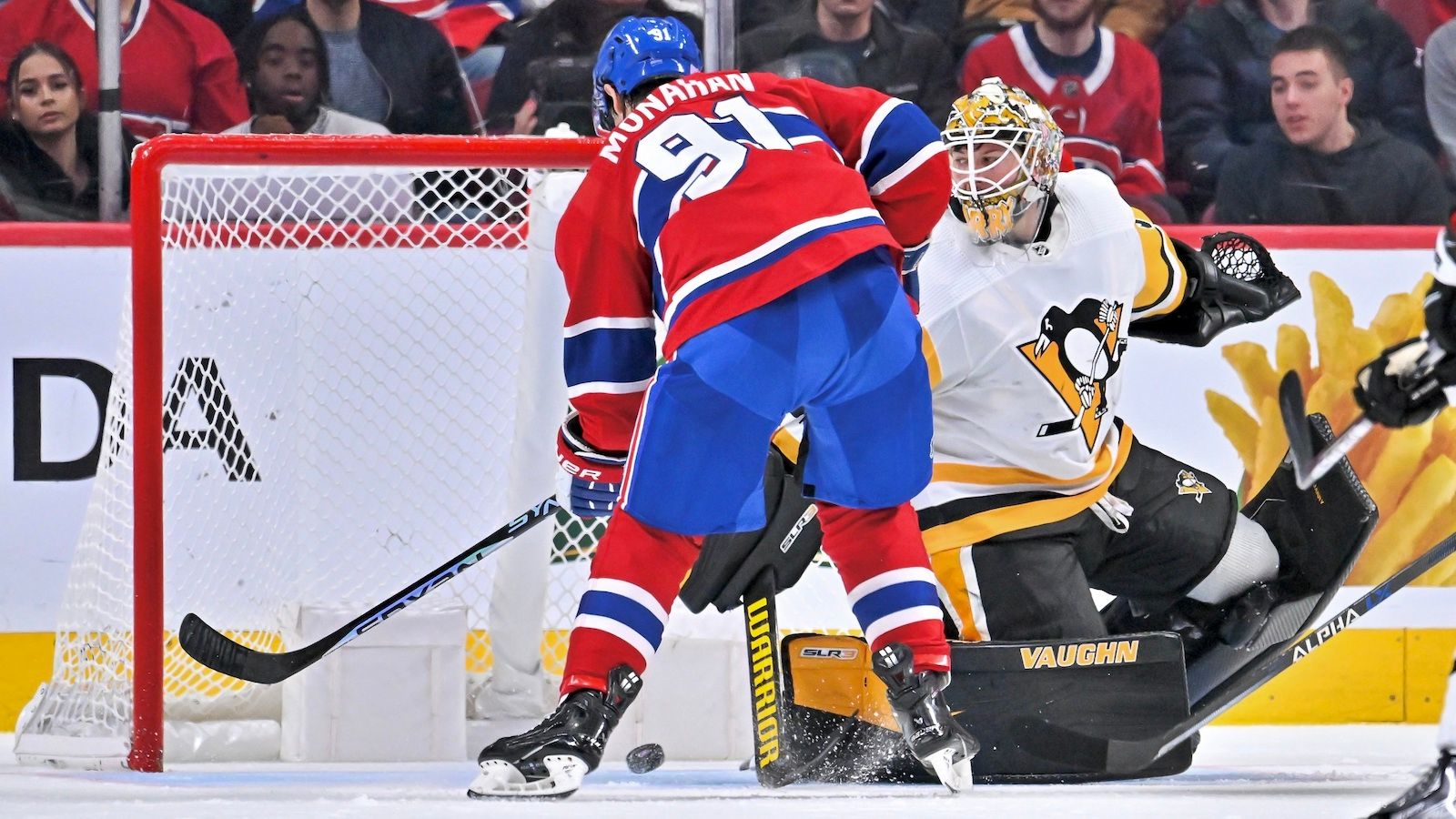
Credit: www.dkpittsburghsports.com
The Evolution Of Period Rules In Hockey
Hockey is a fast-paced and exciting sport that has evolved over the years, including changes to the rules regarding periods. A period in hockey refers to a specified amount of time in which the game is divided. Let’s explore the historical changes and current trends surrounding period rules in hockey.
Historical Changes
In the early days of hockey, periods were not a common feature in the game. Matches were often played as a single continuous session until a team scored a certain number of goals. However, as the sport gained popularity, the need for structured play became evident, and period rules were introduced. These rules initially varied across different regions and leagues.
One of the significant historical changes in period rules occurred in 1910 when the National Hockey Association (NHA) implemented the concept of three periods lasting 20 minutes each. This standardization allowed for better game management and fairness, as teams would switch ends after each period to account for any potential advantages due to ice conditions.
Current Trends
In today’s hockey, the period rules have remained relatively consistent, with three periods being the norm in both professional and amateur leagues. Each period typically lasts for 20 minutes, resulting in a total game time of 60 minutes. However, it is essential to note that there are exceptions to this standard, especially in certain junior and international leagues, where periods may be shorter or longer.
Additionally, there have been discussions within the hockey community about potential rule changes regarding periods. Some proposals suggest adjusting the length of periods to shorten game durations, while others explore the idea of implementing a continuous clock, similar to other sports like basketball. These considerations aim to improve game flow and enhance the overall viewing experience.
While the evolution of period rules in hockey has brought about standardization and fairness to the game, it is a topic that continues to be examined and evaluated by league officials and fans alike. As the sport grows and adapts to modern times, one thing remains certain – the excitement and thrill of each period will always be an integral part of the game.

Credit: www.woodtv.com
Frequently Asked Questions Of How Many Periods In Hockey?
Does Hockey Have 3 Or 4 Periods?
Hockey has 3 periods. Each period lasts for 20 minutes, making a total game time of 60 minutes.
How Many Periods Are In Ice Hockey Game?
An ice hockey game consists of three periods.
Are There Only 2 Periods In Hockey?
No, there are three periods in a hockey game. Each period is 20 minutes long.
How Many Quarters Are There In Ice Hockey?
In ice hockey, there are three periods instead of quarters. Each period lasts for 20 minutes of game time.
Conclusion
In the high-speed game of hockey, the number of periods played varies depending on the league. Whether it’s three periods in the NHL or two in international play, understanding the structure of the game is crucial for both players and fans.
By knowing the number of periods in hockey, you can fully enjoy the excitement and strategy of this exhilarating sport.






